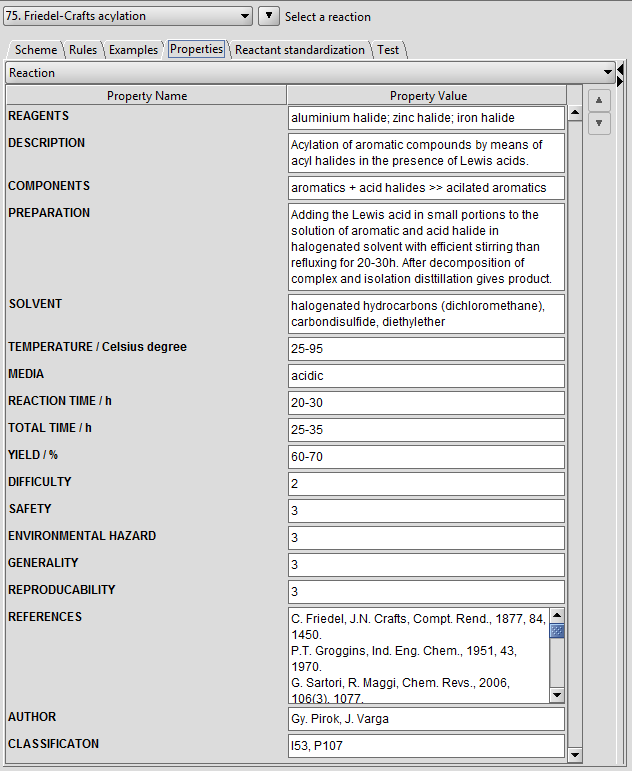Standard Properties in the ChemAxon Reaction Library
Reactor provides much more than a mere list of reaction equations: there are several propery fields associated to every member of ChemAxon's Reaction Library. You may read them or add your own experimental results in the Properties tab of the reaction editor.
Following property fields are available:
Description
-
Explanation of the generic reaction, code etc.
Components
-
Text representation of the reaction scheme: reactants >> products
Reagents
-
Agents, catalysts, and other key ingredients needed for the reaction
Preparation
-
Short description of the method
Solvent
-
Typical solvent(s) used in the reaction
Temperature
-
Typical reaction temperature
Media
-
Acidity/basicity of the reaction mixture
Reaction time
-
Typical reaction time in hours
Total time
-
Overall preparation time including the reaction and the workup
Yield
-
Typical yield of the reaction
Generality
-
Popularity of a reaction, how widely it is used (higher value means more likely, value range: 1-3)
Difficulty
-
The manual difficulty of the reaction and workup procdures (need of special equipments, high pressure, difficult workup due to emulsion, etc; higher value means more difficult value range: 1-3)
Reproducability
-
Reliability of reaction (i.e. Grignard is not difficult, but sometimes does not start; higher value means more reliable, value range: 1-3)
Safety
-
Laboratory or personal risk (handling toxic, flammable reagents; higher value means higher safety risk, value range: 1-3)
Environmental hazard
-
The environmental effect of the used material and methods (higher value means more severe environmental risk, value range: 1-3)
References
-
Most relevant (original) literature citations
Notes
-
Personal remarks about the reaction, experiments
Classification
-
Encoding of the reaction conditions by ...
Author
-
Name of the person adding or editing the reaction
**
An example from Reactor's library:
